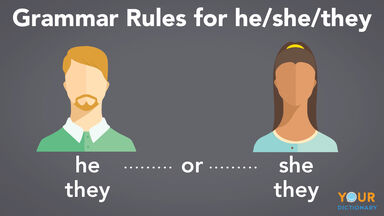Time has come for breaking from “he/she” pronouns

“Whatever he/she may desire” said journalism teacher Brian Winkel as he hoped to rouse a sleepy first period beginning journalism class.
And while his lecture of zoo tigers vs jungle tigers is rousing, all this reporter can focus on is the clumsy and outdated language that he, like many teachers, uses. While the phrase tries to be inclusive, it stumbles. It stumbles because rather than using the singular they, which is open, free and inclusive with ease, they choose to use multiple pronouns that exclude other groups.
Not everyone is a “he” or a “she,” There are theys, xems, hirs, Ems and so many more. Therefore it makes no sense to refer to anyone of unknown identification as he/she instead of they. Gender isn’t binary and it hasn’t been recognized as binary since the late 2000s. not to mention, the Oxford dictionary has recognized the singular they pronoun since as early as 1375.
So what is the hold up? Winkel is not the only teacher or staff member who is at fault when it comes to keeping this clunky old phrase in use. Plenty of staff young and old have chosen to use this mouthful instead of they.
So what are their reasons for not changing with the rest of us? Is it a force of habit? A refusal to change? The darkest option, transphobia? Or do they just not realize what they’re doing? To find out I spoke with a couple staff members just to see why they haven’t changed it up.
“The reason that I do it is because that’s the correct way to do it” And technically speaking, he is correct. For reference, Winkel teaches beginning and advanced journalism, and in terms of journalism “he or she” rather than they is correct.
In his defense he cited the Associated Press Stylebook; its full title is The Associated Press Stylebook and Briefing on Media Law. It is an American English grammar style and usage guide created by American journalists working for or connected with the Associated Press. “In stories about people who identify as neither male nor female or ask not to be referred to as he/she/him/her: Use the person’s name in place of a pronoun, or otherwise reword the sentence, whenever possible. If they/them/their use is essential, explain in the text that the person prefers a gender-neutral pronoun.” So, technically, he is correct, but what about other teachers?
So there’s our answer: it’s a little bit of habit and a little bit of grammatical correctness.









You must be logged in to post a comment Login